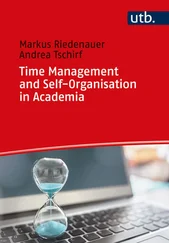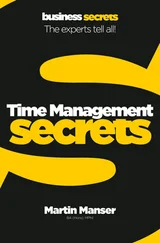Thomas Limoncelli - Time Management for System Administrators
Здесь есть возможность читать онлайн «Thomas Limoncelli - Time Management for System Administrators» весь текст электронной книги совершенно бесплатно (целиком полную версию без сокращений). В некоторых случаях можно слушать аудио, скачать через торрент в формате fb2 и присутствует краткое содержание. Жанр: Старинная литература, на английском языке. Описание произведения, (предисловие) а так же отзывы посетителей доступны на портале библиотеки ЛибКат.
- Название:Time Management for System Administrators
- Автор:
- Жанр:
- Год:неизвестен
- ISBN:нет данных
- Рейтинг книги:4 / 5. Голосов: 1
-
Избранное:Добавить в избранное
- Отзывы:
-
Ваша оценка:
- 80
- 1
- 2
- 3
- 4
- 5
Time Management for System Administrators: краткое содержание, описание и аннотация
Предлагаем к чтению аннотацию, описание, краткое содержание или предисловие (зависит от того, что написал сам автор книги «Time Management for System Administrators»). Если вы не нашли необходимую информацию о книге — напишите в комментариях, мы постараемся отыскать её.
Time Management for System Administrators — читать онлайн бесплатно полную книгу (весь текст) целиком
Ниже представлен текст книги, разбитый по страницам. Система сохранения места последней прочитанной страницы, позволяет с удобством читать онлайн бесплатно книгу «Time Management for System Administrators», без необходимости каждый раз заново искать на чём Вы остановились. Поставьте закладку, и сможете в любой момент перейти на страницу, на которой закончили чтение.
Интервал:
Закладка:
A cleaning service is most economical when the cost is divided by a few people. If you share a house with others, having a cleaning service every other week can be a godsend, and it helps to avoid arguments about whose turn it is to clean. Plus, I can't imagine four typical male system administrators sharing a house and it not looking like a disaster area and smelling like a locker room. This fixes many problems.
Hardware/Software Installation
Speaking of paying people to do work for you, when I have the budget, I find it useful to pay for installation of the hardware/software that we buy at work. This is particularly important for something that we'll never be repeating.
As an example, let's look at the process of installing a large backup/restore system and tape library. The installation has two parts. First, we do the installation of the hardware and software. This phase ends when we have one server being backed up properly. The second part is the ongoing add-change-delete of systems that are being backed up.
The learning curve for the first part is huge, and yet the payoff is very small. We will spend days, possibly weeks, setting up everything, battling bad manuals and crazy hardware problems. We won't be using this knowledge again because once the system is installed, we won't be installing another one. What might take us weeks could take a VAR or reseller a day or two because they have done it many times. It's their specialty. They know what the pitfalls are and how to avoid them.
The second part has a much better payoff. Learning how to add a new backup server, configure it to back up a new disk, and remove servers or disks has an excellent payoff. It is knowledge gained that we will use time and time again.
Another example is automated OS installation. Setting up a system to automatically load the OS and related applications on a workstation can be complicated, but it has a huge payoff, especially if you reload machines often or purchase many new machines. Examples of this kind of thing include Microsoft RIS, Solaris JumpStart, Red Hat KickStart, and FreeBSD NetBoot. It can be much more cost efficient to pay someone to set up the system and teach you how to make maintenance modifications (adding new software, and so on) rather than struggle through the initial installation alone.
This kind of consulting can be expensive and, therefore, it must be thought of during the budgeting process. Even though installation charges may be 20, 50, or even 100 percent as high as the purchase price of the hardware and software, paying someone to do the initial installation can be well worth it. Especially if this will free you up to work on other projects.
If you do take this advice, remember to shadow the person and have them explain what they are doing as they do it. That way, you get the benefit of his experience and understanding of how the system works, which is useful when you need to debug a problem. It may take some of your time, but not as much as if you try to do the installation yourself.
Others
There are plenty of other time-wasting activities that we can all manage much better. Hopefully the previous list has included a good sampling of work-related and personal time wasters to jog your memory and help you start thinking about the time wasters in your life that you can either manage better or eliminate completely. Of course, what's a waste of time for one person is an important part of life to someone else. Everyone is different.
Strategic Versus Tactical
For a system administrator, the ultimate time waster is any task that could be eliminated if only we had time to build the infrastructure to make such busywork go away. In other words, the ultimate time management technique for a system administrator is a good IT infrastructure.
Strategic tasks are those dealing with long-term planning, like constructing a security policy, getting buy-in from management, and deploying the policy. Tactical tasks are specific tasks related to a particular process, such as formatting a hard drive or installing a new PC.
The problem is that we get so caught up with tactical tasks that we never feel that we have time for strategic work. We're so busy mopping the floor that we don't have time to fix the leaking faucet.
You won't need to spend time handing out IP addresses if you deploy a DHCP server. You won't find yourself spending days fixing security problems if you have a modern and pervasive security program with things like automatically updating virus/malware/spam detection, self-defending networks, and policies that are supported by the highest levels of management. You won't spend afternoons debugging oddball Windows problems that turn out to be slight misconfigurations if you have an infrastructure that automates operating system installation so that every new machine starts out right. You won't spend nights restoring data from backup tapes if you have a server infrastructure that includes proper power, cooling, and redundant storage (RAID). (Not that RAID replaces the need for disaster recovery backups.)
The key is to make time for the strategic projects. Get them onto your calendar and schedule time for the individual steps in your to do list. My rule is to always have one strategic project going on. I'd like to have 50, but if I spread myself too thin, I won't get any of them done. It's better to pick one good project that gets done than to start 50 that never get finished. The advice in the section "Prioritization for Impact" in Chapter 8 will help you narrow down the project. Get consensus on which project will have the biggest impact, and get the whole team working on it until it's complete.
If you are looking for a good book on this topic, I recommend The Practice of System and Network Administration . It's more than 700 pages and very complete. I am, however, a little biased.
Summary
A time waster is any activity that has a low ratio of benefit to time spent. Rather than trying to do these activities more efficiently, it is better to try to eliminate them.
Certain activities can expand to fill all your time. You can snap out of it by setting a time limit. Make self-imposed rules such as, "When I start to do [insert activity], I will set an alarm to remind me to stop 10 minutes from now."
Nothing makes it easier to resist temptation than a witness. Sharing an office with a coworker can eliminate any inclination to do nonwork activities while you're at work.
There are many time wasters in modern life: junk items on the to do list, email lists, chatrooms, nonwork discussions at work, unwanted salespeople and recruiters, manual processes that could be automated, and so on. Once identified, they can be eliminated.
At home, you can manage time wasters better by using a digital video recorder to manage your TV, "videos to rent" lists and Netflix so you spend less time wandering around video stores, and laundry and housecleaning services so you have more free time for fun.
Learning to install something that will only be installed once has limited payback. For complicated installations like centralized backup/restore systems, budgeting to have installation done by the vendor or VAR can be a significant win.
For a system administrator, the ultimate time waster is any task that could be eliminated if only you had time to build the infrastructure to make such busywork go away. In other words, the ultimate time management technique for a system administrator is a good IT infrastructure. By thinking strategically, you can eliminate tactical tasks over the long term. In other words, you can stop mopping the floor and fix the leaking faucet.
Chapter 12. Documentation
This chapter is about how a good documentation repository can help us as system administrators, especially in our effort to manage our time better.
Читать дальшеИнтервал:
Закладка:
Похожие книги на «Time Management for System Administrators»
Представляем Вашему вниманию похожие книги на «Time Management for System Administrators» списком для выбора. Мы отобрали схожую по названию и смыслу литературу в надежде предоставить читателям больше вариантов отыскать новые, интересные, ещё непрочитанные произведения.
Обсуждение, отзывы о книге «Time Management for System Administrators» и просто собственные мнения читателей. Оставьте ваши комментарии, напишите, что Вы думаете о произведении, его смысле или главных героях. Укажите что конкретно понравилось, а что нет, и почему Вы так считаете.












